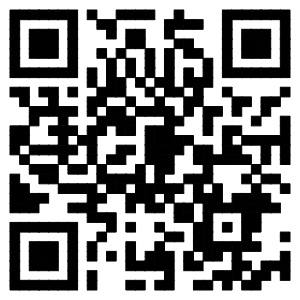在英语中有一类词看似简单,但却变化万千,拥有非常强大的功能,它就是表示数目和顺序的数词。数词可分为基数词和序数词两类。同时,它频繁出现在你的生活、工作以及你能想到的各类考试中,所以无论你是英语初学者,亦或是英语达人,必须对这类词高度重视。下面就跟着北外网课小编一起先看一看基数词吧。
用来表示数目,或者说表示数量的词叫基数词。想要掌握并运用基数词,大致需要五步走:
第一步,掌握最基本的数词,这也是最简单的一步。
最基本的基数词如下表所示:
100以下的基本基数词 | 100以上的基本基数词 | ||
1~10 | 11~19 | 20~90 |
|
1 one | 11 eleven | 20 twenty | 100 a / one hundred |
2 two | 12 twelve | 30 thirty | 1000 a / one thousand |
3 three | 13 thirteen | 40 forty | 1,000,000 a / one million |
4 four | 14 fourteen | 50 fifty | 1,000,000,000 a / one billion |
5 five | 15 fifteen | 60 sixty |
|
6 six | 16 sixteen | 70 seventy |
|
7 seven | 17 seventeen | 80 eighty |
|
8 eight | 18 eighteen | 90 ninety |
|
9 nine | 19 nineteen |
|
|
10 ten |
|
|
|
温馨提示:
基数词1~12是独立的单词,需逐个记忆。
10,000,000 ten million 100,000,000 a/ one hundred million
第二步,掌握一些数词的构成规律,轻松、准确地表达数目。
数词的构成规律如下:
1. 13~19是由个位数加后缀-teen构成。知道了这一点,还得特别关注,13、15的拼写是thirteen和fifteen。
2. 20~90由个位数加后缀-ty构成。此外,还需要特别注意20—50的拼写分别是twenty, thirty, forty 和fifty; 80的拼写是eighty。
3. 21~99的非整十位数是在十位数和个位数之间加“-”。如:23 twenty-three, 47 forty-seven, 81 eighty-one, 96 ninety-six。
4. 101~999的基数词先写百位数,后加and再写十位数和个位数。如: 491 four hundred and ninety-one。
5. 1000以上的基数词先写千位数,后写百位数,再加and,最后写十位数和个位数。
如:6892 six thousand eight hundred and ninety-two。 在基数词中只有表示“百”、“千”的单位词,没有单独表示“万”、“亿”的单位词,而是用thousand(千)和million(百万)来表达,其换算关系为:1万=10 thousand;1亿=100 million; 10亿=a thousand million=a billion。
第三步,准确地读出这些数字,破解交流中的障碍。
数字的具体读法,具体如下:
1. 一位数和两位数的数字的读法:直接读。
2. 三位数的读法: 第一个数字+hundred + and +后面的一位或两位数字, 如: 101读作one hundred and one, 864读作eight hundred and sixty-four
3. 四位数和四位以上数字的读法: 阿拉伯数字每三位为一段, 从后往前用逗号分开, 每个逗号处所用的数词分别为: thousand, million, billion, 如:
21,634,755读作twenty-one million six hundred and thirty-four thousand seven hundred and fifty-five.
注意: 读这样的数时, 只在hundred一词后加and。
4. 多位数的读法:
1) 1000以上的多位数,要使用计数间隔或逗号“,”。即从个位起,每隔三位加一个间隔或逗号。第一个间隔或逗号前是thousand(千),第二个间隔或逗号前是million(百万),第三个间隔或逗号前是a thousand million或a billion(十亿)。
2) 每隔三位分段以后就都成了101~999。读的时候十位数(或个位数)的前面一般要加and。如:
888,000,000读作:eight hundred and eighty-eight million。
第四步,掌握基数词的用法,灵活表达自己的想法。
1. 年龄表达法
① 表示某人几岁的确切年龄,用“基数词+years old”或“基数词+of age”或者“at the age of+基数词”,也可用“基数词-year-old”表示,此结构常做前置定语,还可以用“of+基数词”表示,注意啦,这个结构常做后置定语,此外,还有“aged +基数词”,也用作后置定语,当然也直接用基数词。如:
a. He looked quite healthy though he was seventy years old.
b. He looked quite healthy though he was seventy years of age.
c. He looked quite healthy though he was at the age of seventy.
d. The seventy -year-old man looked quite healthy.
e. The man who looked quite healthy was of seventy (years).
f. Lying on the grass was a man aged about seventy.
g. He looked quite healthy though he was seventy.
② 表示某人几十多岁这样的约略年龄,用“in one’s + 逢十的基数词的复数(如tens, twenties, thirties等)”来表达。如:
The hero of the movie is an artist in his thirties.
The artist became famous in his thirties.
in his thirties在他30多岁时。
特别提醒: 表示某人几十多岁,基数词前一定要用形容词性物主代词。
2. hundred, thousand和million的用法
在hundred, thousand, million, billion等的前面有基数词或several时,表示实数意义,只能用单数形式;注意这类词前不能与many连用,若表示不确定数目的数百、数千、数百万等时,就一定要在它们的复数形式,还要加上of了。如:
Several million people in the world are sending information by E-mail every day. million前有several时,只能用单数形式在名词前作定语。
He has millions of books. 他有许多许多书。
温馨提醒:
数词dozen 十二, score二十的用法与hundred, thousand等相同
3. 表达编号
基数词可以表示书页、住所、房间、教室、电话号码等的编号。
① 编号的事物可用基数词加名词构成。 基数词位于名词之后。如:
第4课Lesson 4 (读作:lesson four)
第8号:Number 8 (读作number eight,缩写为No.8);
第9行:Line 9 (读作line nine 缩写为L9/ l.9)
第9部分:Part 9 (读作:part nine)
唐宁街10号: No. 10 Downing Street (读作:number ten Downing Street)
12路公共汽车:Bus No.12,Bus 12 或the No.12 Bus (读作:Bus number twelve,Bus twelve 或the number twelve Bus )
第15页:Page 15 (读作:page fifteen, 缩写为P15/ p.15)
② 编号的事物若数字较大, 一般用基数词放在名词后面来表示, 名词前一般不用定冠词, 如: 第109页:Page 109 (读作page one hundred and nine);
418号房间:Room 418,Room No.418或the No.418 Room(读作room four hundred and eighteen, )
③ 其他编号
电话号码660-232-55:Tel.No.660-232-55读作 telephone number double six zero,(dash),two , three, two,(dash),double five
邮政编码100081:postcode (或zip code) 100081
温馨提示:
电话号码中的0可读作zero或[əʊ],双数如66可读作six, six或double six中间的“-”号可读作dash,也可稍作停顿不读出。
4. 表达年、月、日
· 在表示”年、月、日”时, “年”用基数词, “年”的读法通常是先读前一位或两位数,在读后两位数;“日”通常用序数词读出。
· ①年份:
· a. 三位以内的年份
· a) 按照一般基数词的读法来读,如:
· 公元前476年: 476 B. C. 读作four hundred seventy-six B. C
· 公元381年:381 A. D.或 A. D.381读作three hundred and eighty-one A. D.
· 公元43年: 43 A. D.或 A. D.43读作 forty-three A.D.
· b) 先读第一位,再把后两个数合起来读。如:
· 公元984 年,可读为 nine eighty-four A. D,
· 公元757 年,读成 seven fifty-seven A. D。
b. 关于四位数年份的读法有下列几种情形:
· a) 一般情况下,按前后分为两组,每一组的数字都按基数词来读。
1865年读作 eighteen sixty-five
1998年读作 nineteen ninety-eight
b) 如果是整百的年,后面的两个“零”读为 hundred。
· 1900年读作 nineteen hundred
· 1800年读作 eighteen hundred
c) 十位数字上为“零”,该“零”可读为字母 O 的发音。
· 1908年: 1908 读作nineteen o eight
d) 关于千年的一些读法:
· 公元1900年:1900 读作nineteen hundred
· 公元2008年: 2008 读作 two thousand and eight 或o eight或 two thousand eight(通常情况下“and”不读出来)
· 公元1008年: 1008 读作 one thousand and eight或o eight或 one thousand eight(通常情况下“and”不读出来)
②年代表达法: 年代用 “定冠词+世纪百位进数+十位年代数”, 表示在某个世纪的几十年代,用“in the +逢十的基数词的复数”。基数词的复数若用阿拉伯数字表示,可直接加s,也可加’s。如:
在20世纪90年代,写作:in the 1990s或in the 1990's
读作:in the nineties of the twentieth century , 或者in the nineteen nineties.
It is not rare in the 90s that people in their fifties are going to university for further education.
③ 日期: 日期的写法可以采用基数词和序数词两种形式。如:
March 1也可以写成March 1st;May 29也可以写成May 29th。但是,日期的读法只能用序数词的形式。如: October 31(October 31st) 读作October(the)thirty-first. 注意:通常情况下,the 是不读出来的。
· 2006年11月25日: November 25(th),2006或,25(th) November,2016读作November (the) twenty-fifth,two thousand and six
温馨提示:
a. 在表示时间时,汉语中常以“年—月—日”的顺序,日期的表示法英国和美国稍有不同,英国通常表示为“日—月—年”,美国通常表示为“月—日—年”。如“10月10日”可表示为 October 10,1985(美)或10(th)October, 1985(英)。
b. 最好避免把整个日期都写成数字, 这在英美语中表示的含义并不相同:如“2. 7. 97”、“2-7-97”、“2/7/97”这类表达,在美国英语中表示“1997年2月7日”,而在英国英语中则表示“1997年7月2日”。 2004年6月1日在英语中可写为:June 1,2004或1 June,2004或1/6/2004或1. 6,2004。在美国英语中也可写作6/1/2004或6. 1,2004。
c. 在英语中月份的省略写法如下:
· January—Jan. February—Feb. March—Mar.
· April—Apr. May—May June—June
· July—July August—Aug. September—Sept.
· October—Oct. November—Nov. December—Dec.
5. 时间表达法:
首先,了解通用的表达时间的方法:将“小时+分钟“按顺序用基数词读出。
7:10 seven ten 8:30 eight thirty 3:40 three forty
接着,再来看一些特殊的表达方式。
① 几点几分的情况:
a. 如果时间在半小时以内, 可用“分钟+past+小时”,表示“几点过几分“, 如: 3:05 =five past three, 5:20 =twenty past five
b. 如果时间超过30分钟, 可用“(相差的)分钟+to +(下一)小时”, 表示“差几分到几点” 如: 8:35 =twenty-five to nine; 12:50 =ten to one
c. 如果时间恰好为半小时,可以用“half past +小时”, 如: 11:30 half past eleven.
② 表达的分钟和15有关,15分钟也叫一刻钟,a quarter ,有三种表述方法,如:
9:15 nine fifteen, fifteen past nine, a quarter past nine
4:45 four forty-five, fifteen to five, a quarter to five
③ 表示整点的情况,用基数词
—What time is it? 几点了?— It is eight (o’clock). 八点了。
④ 一般场合用12小时制, 为避免误解可用:in the morning, (afternoon, evening) 上午 (下午, 晚上), at night 午夜, 或用a.m.表示上午,p.m.表示下午某时间, 如:
上午八点(8:00) —eight in the morning, 或8:00 a.m.,
下午四点十五分 (16:15)— a quarter past four in the afternoon, 或 4:15 p.m.
晚上九点(21:00)—nine in the evening 或 9:00 p.m.
午夜十二点(0:00)—twelve at night
凌晨一点(1:00)— one in the morning 或 1:00 a.m.
当然,时刻也可用24小时制读法, 只须依次读出点钟数和分钟数, 整点钟时, 需在最后加读hundred ( hours), 如: 18:45读作eighteen forty-five, 18:00读作eighteen hundred ( hours )
6. 加减乘除的表达
数学运算的加减乘除分别用plus, minus, times, divided by表示。
① —How much is five plus three? — Five plus three is / equals eight.
② —How much is five minus three? —Five minus three equals / leaves two.
③ —How much is five times three? —Five times three makes / is fifteen.
④ —How much is fifteen divided by three?
—Fifteen divided by three equals five.
两倍:twice 两倍以上: 基数词 +times
① 倍数表达的三个常规句型
a. “倍数+形容词(或副词)的比较级+than+从句”表示“A比B大(长、高、宽等)多少倍”如: This gym is three times bigger than that one.(比那个体育馆大两倍)
b. “倍数+as+形容词或副词的原级+as+从句”表示“A正好是B的多少倍”。The dictionary is four times as thick as that book. 这本词典的厚度是那本书的四倍(厚出三倍)
c. “倍数+the size/ height/ length/ width,etc.+of…”表示“A正好是B的多少倍”。如:This river is four times the length of that one. 这条河是那条河的四倍长。
② 常规句型的变形及其特殊规律
a. …times+more+名词(可数,不可数)+than…
There are five times more books in our library than in yours.
我们图书馆里的书比你们图书馆里的书多五倍。
We have produced twice more grain this year than we did last year.
我们今年生产的粮食是去年的两倍。b. …times as many/much+名词+as…
There is three times as much water in this bottle as in that one.
There are four times as many customers as we expected.
c. …times over+被比对象,表示“增加……倍”
The grain output in that village is twice over that of 2006.
d. …times+that of+被比对象,表示“是……倍”
In this workshop,the output of November was 5 .5 times that of January.
e. … times+compared with+被比对象
The number of the students in our school has increased 4 times compared with 1980. 我们学校的学生人数比1980年增加了三倍。
f. … times+what+从句
The production is now four times what it was twenty years ago.
g. double可以用作形容词,表示“两倍的”, 也可以用作动词,表示“是……的两倍。“如:
The production is now double what it was ten years ago.
The output has been doubled in the past six years.
This brought a steady rise in the grain yield. In 2002 it nearly doubled that of 1980.
8. 基数词可以与度量单位连用,可以用“基数词+单位词+形容词”或者“基数词+单位词+in+名词”:
twenty feet wide / in width, twenty meters deep/ in depth, ten meters long/ in length, one hundred yards
9. 分数的表示法: 分数的分子用基数词表示, 分母用序数词表示, 若分子大于1, 则分母用序数词的复数形式, 如:
a/one third, two tenths, two thirds, seven ninths, seven forty-sixths
有些分数可以用half(一半), quarter(四分之一)表示, 如: a/ one half, a/ one quarter, five and three quarters;
Three quarters of the students have passed the test. 四分之三的学生通过了测验。
10. 小数: 小数点读作point, 小数点前面的数字读作一个完整的基数词, 小数点后面的每位数字依次用基数词读出, 如:
5.4读作five point four;0.3读作zero point three;
7.96读作seven point nine six。
11. 百分数表达法: 百分数是由基数词(或小数)和百分号构成,即“基数词+ percent(=%)”表示, 如:
6% 读作:six percent ; 0.5% 读作:zero point five percent; 26% 读作:twenty-six percent; 15.9% 读作:fifteen point nine percent; 100% 读作:one hundred percent
12. 基数词可以用作序数词, 如:
基数词可以放在名词之后,用作序数词,这时基数词可以是阿拉伯字码,如1,2,3,也可以是罗马字母I, II, III. 罗马字母要大写,用于较正式的场合,如法律文件的第几款,或国王、女王、主教等。
第二幕 Act II 第四部分 Part IV
伊丽莎白二世 Elizabeth II (Elizabeth the second )
亨利八世 Henry VIII (Henry the Eighth)
World War II读作World War two或the second world war.
13. 其他数字的读法
$10.15读作ten dollars and fifteen cents;
25℃ 读作twenty-five degree;
-10℃ 读作ten degree below zero或minus ten degree。
14. 有些基数词可以构成固定词组和习语, 如:
one by one一个接一个twos and threes三三两两
ten to one 十拿九稳 in twenty minds 犹豫不决
in two minds 三心二意sweet seventeen 二八年华
five and ten 廉价商店 two or three 少数的
in one 合为一体 by twos 成双成对
six to one 六对一put two two together 推理
one in a thousand 千里挑一 a nine days wonder 一时的新鲜
one and the same 完全一回事 a drop in the ocean 沧海一粟
a thousand and one 许许多多,无数
to talk nineteen to the dozen 喋喋不休,滔滔不绝, 口若悬河
strike twelve 达到最高目标,to be on a cloud nine 喜气洋洋;高兴万分
six of one and half a dozen of the other半斤八两
one dog,one bull 一兵对一卒;公平竞争
ninety-nine out of a thousand 差不多,总是
Four eyes see better than two. 一人计短,两人计长;集思广益
0ne coward makes a dozen。一人害怕, 众人退缩
kill two birds with one stone 一石二鸟
the Seven Deadly Sins (基督教中)七种不可宽恕的罪行
Rome was not built in one day. 罗马非一日建成。
Three score and ten is the age of man。人生七十不稀罕。
0ne bee is better than a hundred flies. 百只苍蝇不如一只蜜蜂
第五步,选择使用数字或文字表示数的场合,做到英语数字地道的书写。
1.一般来说, 不超过10的数目用文字表示, 超过10的数目用数字, 如:
①There are five boys in our class.
②There are about 103 students in our class.
2. 在句首的数目多用文字表示:
One hundred and two people are against the plan.
3. 基数词的复数形式多用文字表示:
① There are four twos in eight.
② The actor became famous in his fifties.
4. 列举几个数字时,无论是用哪一种方式,都需前后一致。
I bought two books, three pencils and four notebooks.
5. 一般情况下,能用一个或两个字表示的数目都用文字,超过两个字的数目用数字。
Over one hundred people went on the trip.
More 160 people addend the conference.
6. 百万以上的数目常用million, billion表示。
There are 1.3 billion people in China.
当然,数词的功能如此强大,变化万千,小编在这里不可能列出它所有的用法,只希望这些归纳整理能够帮助到大家,更多的数词知识等待着你去发现,去积累, 最终能够灵活运用。

 京公网安备 11010802024222号
京公网安备 11010802024222号




